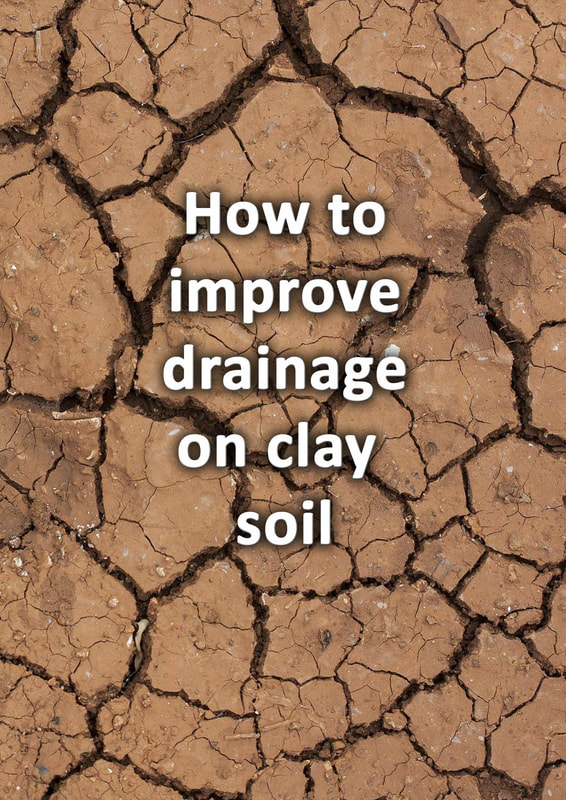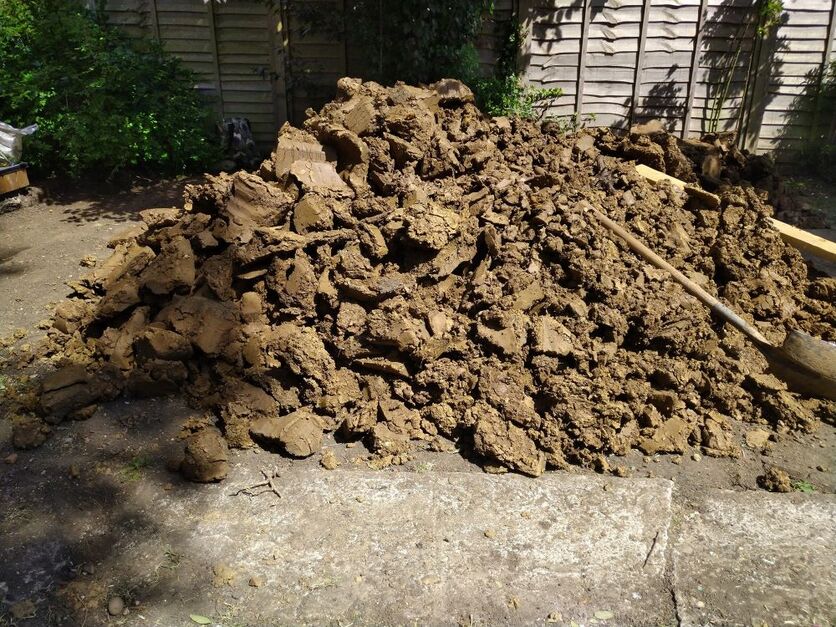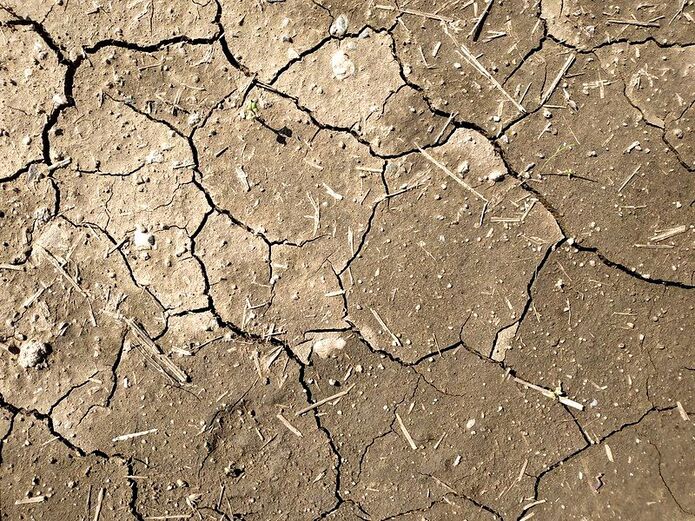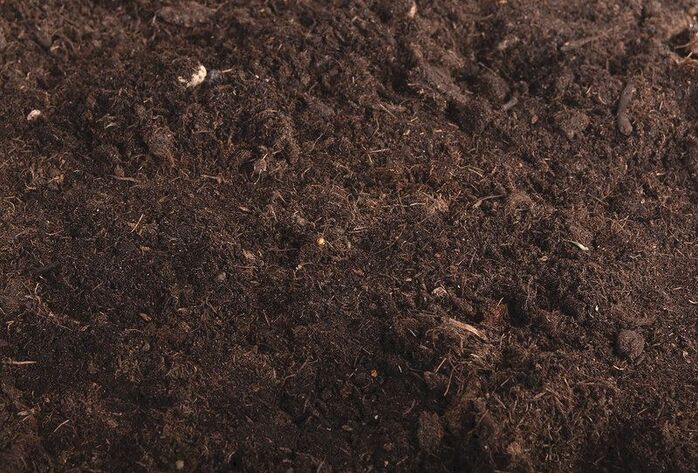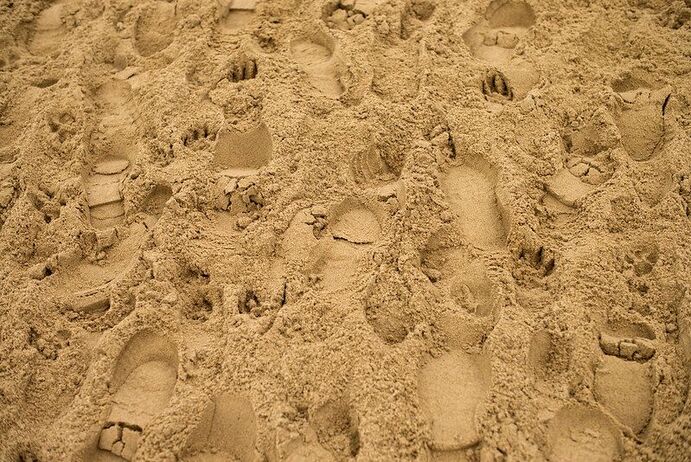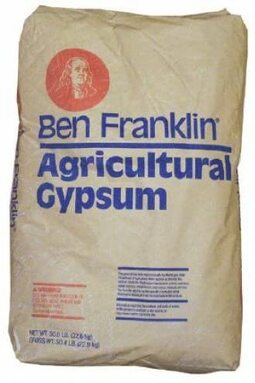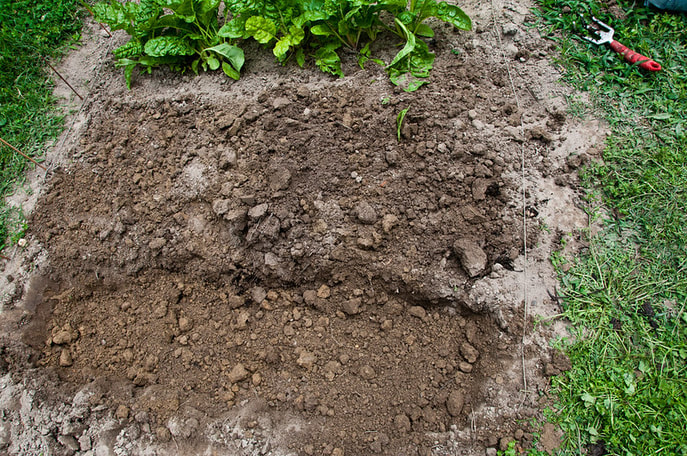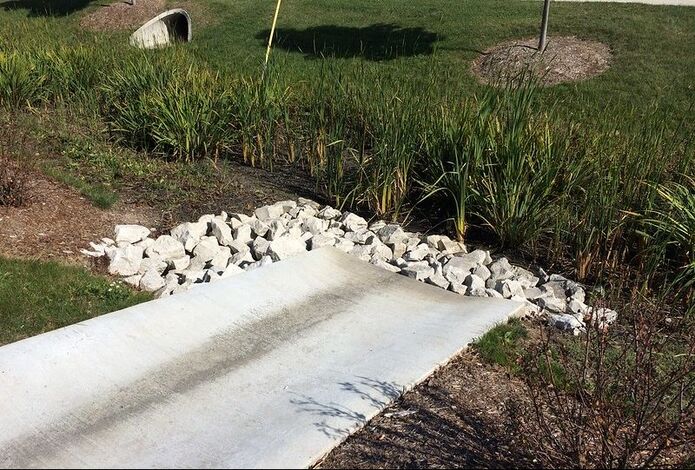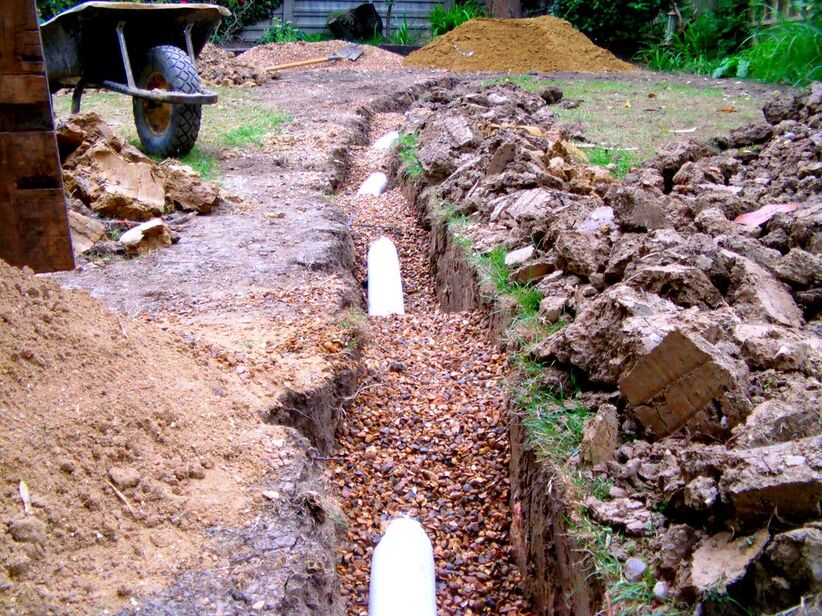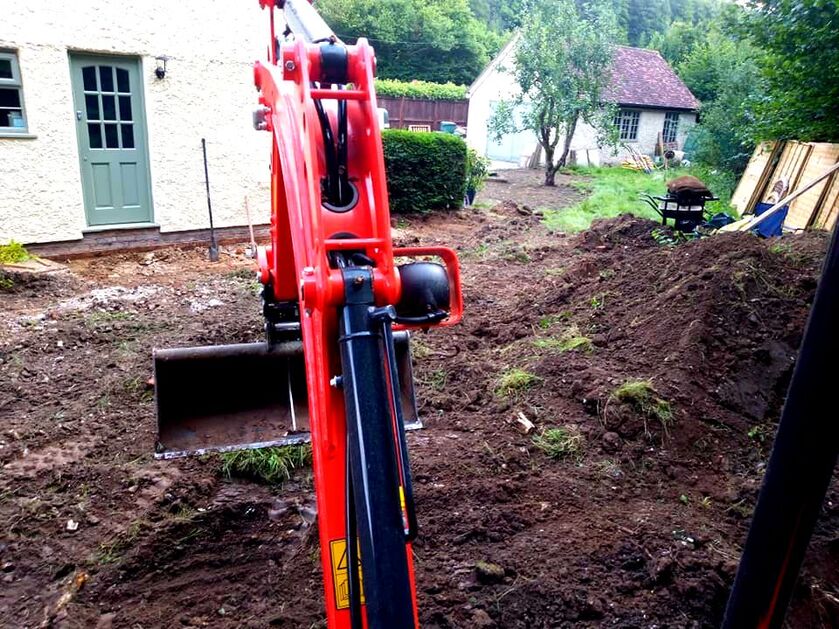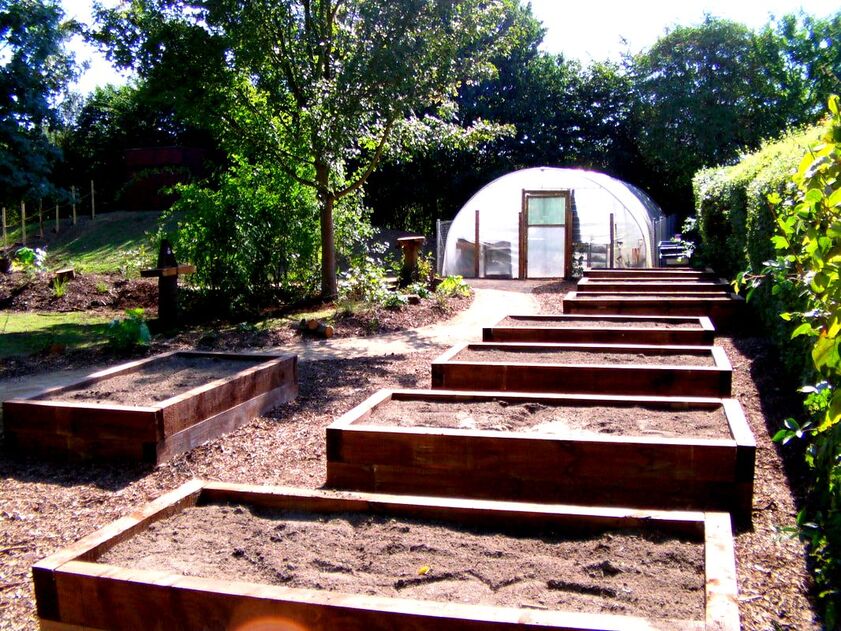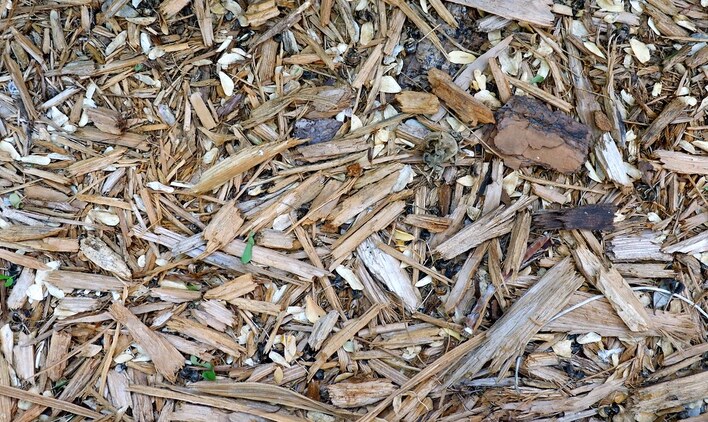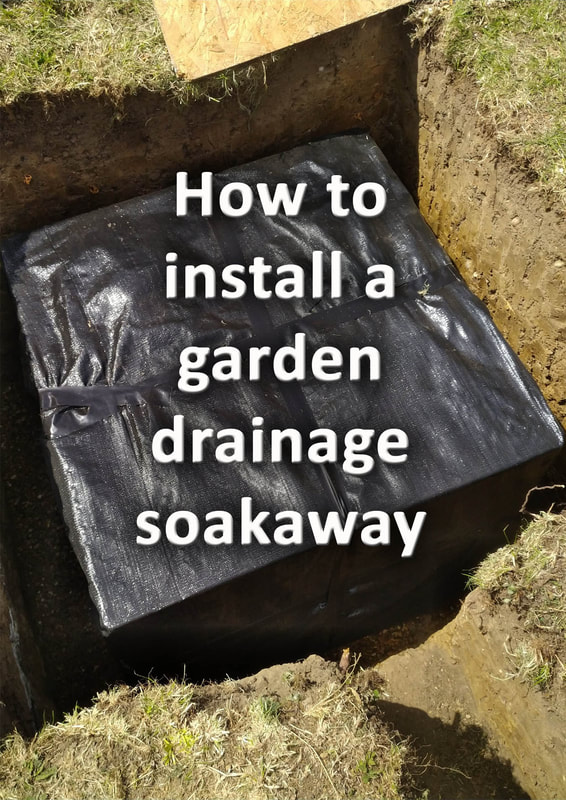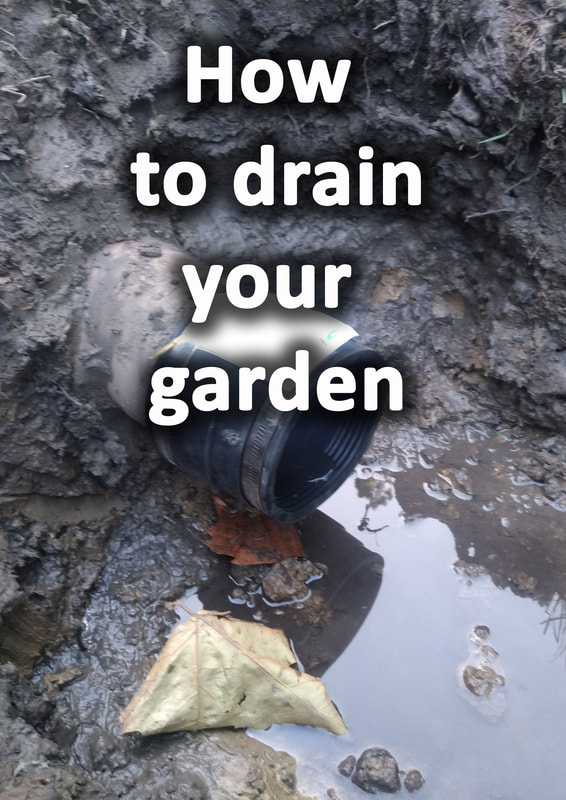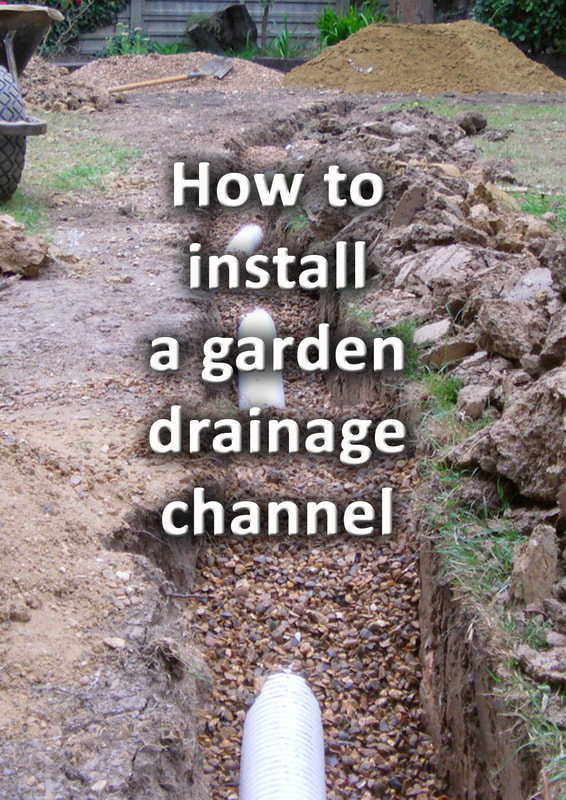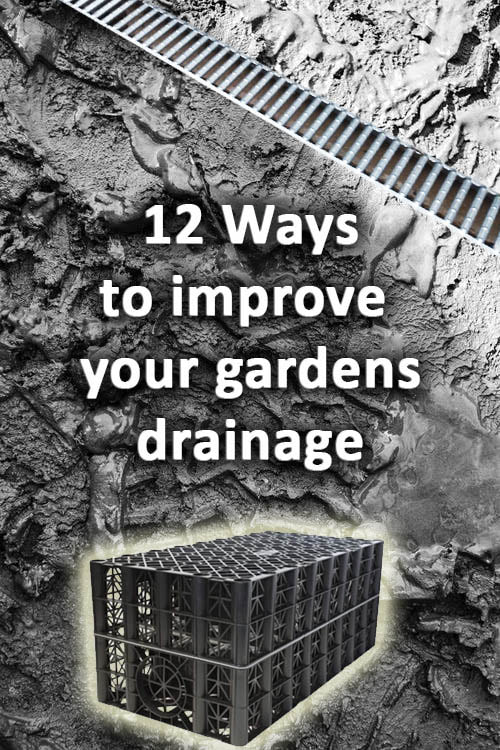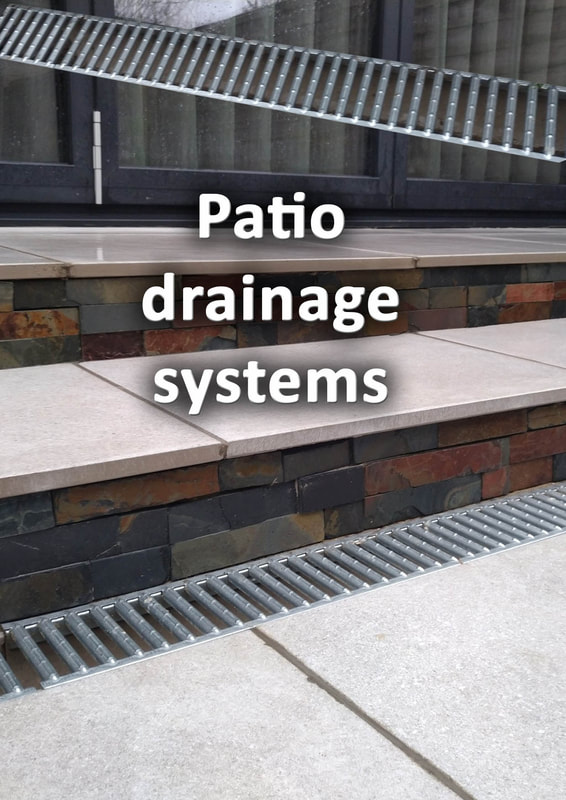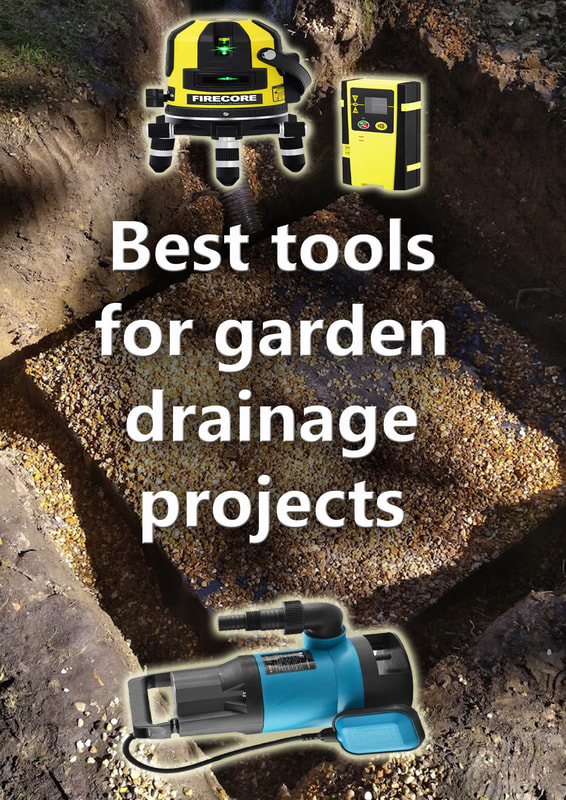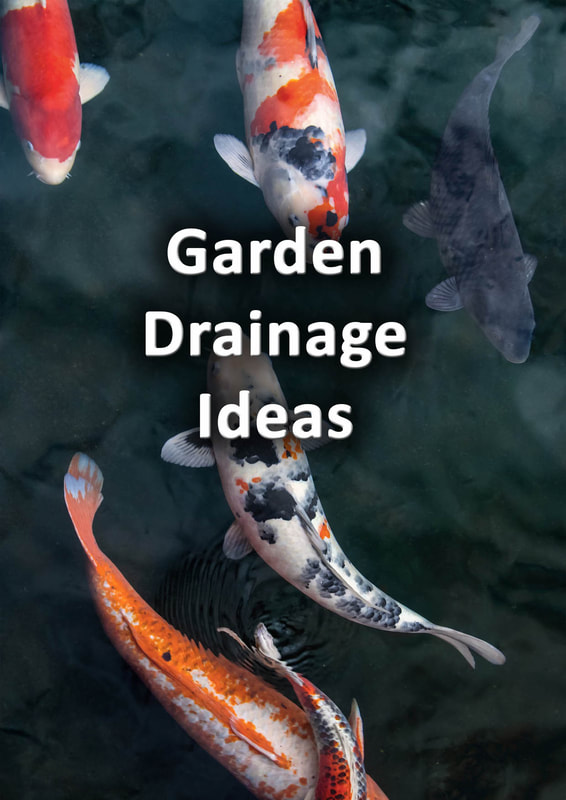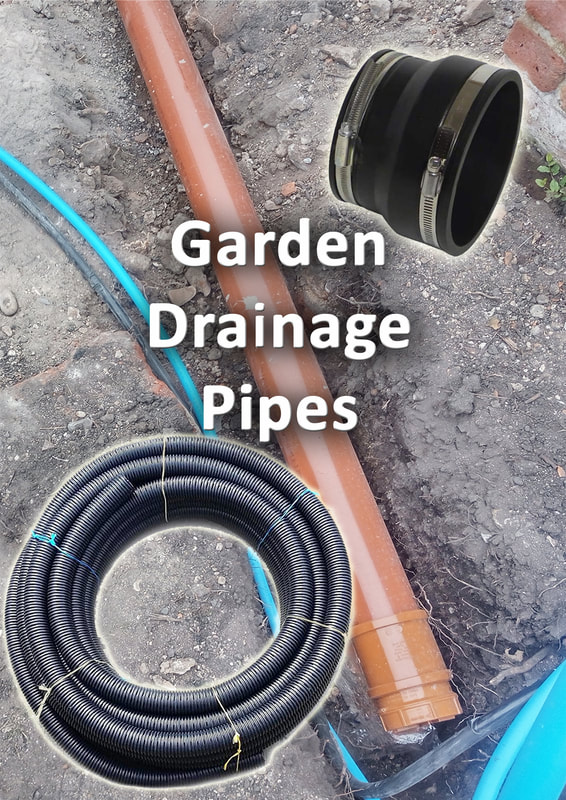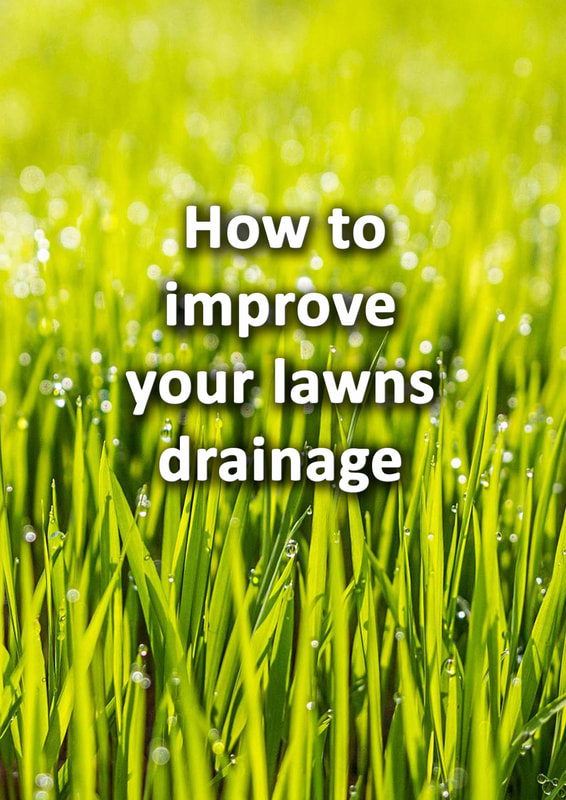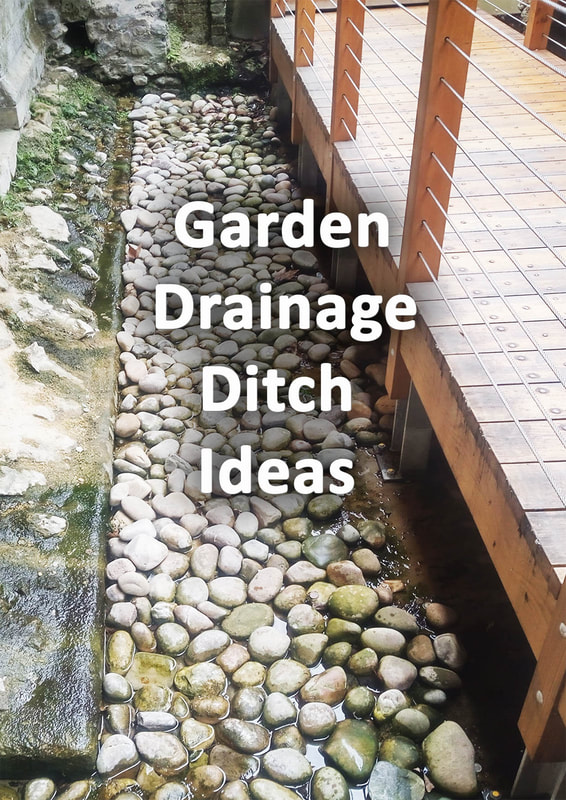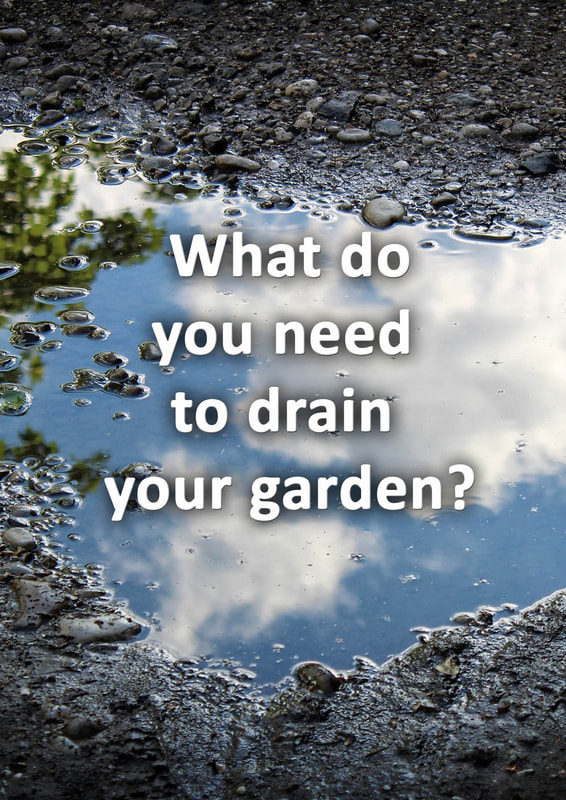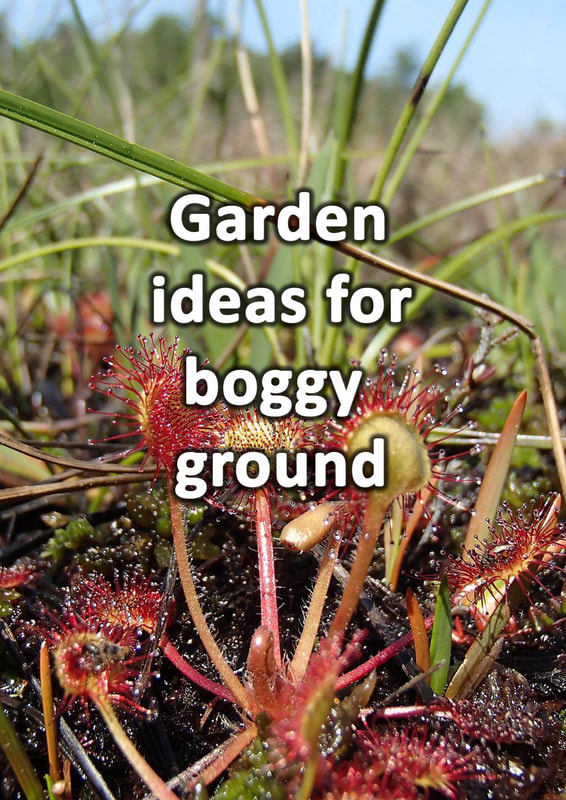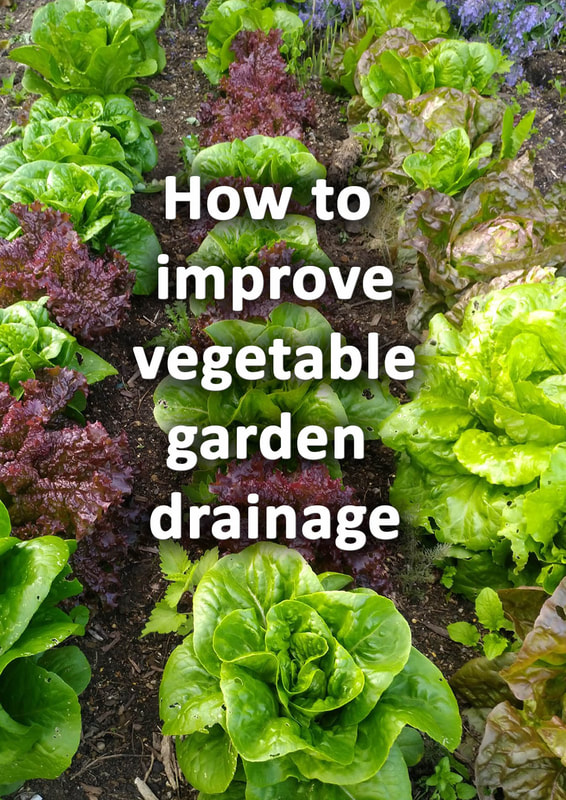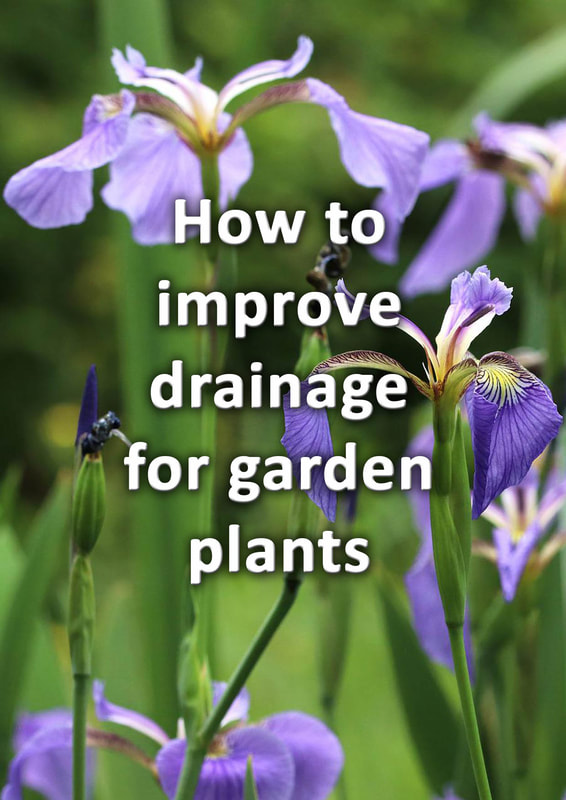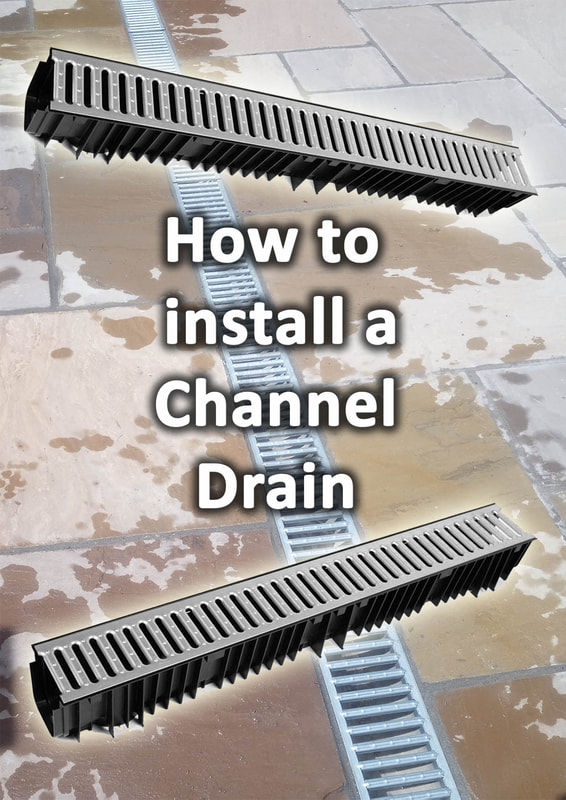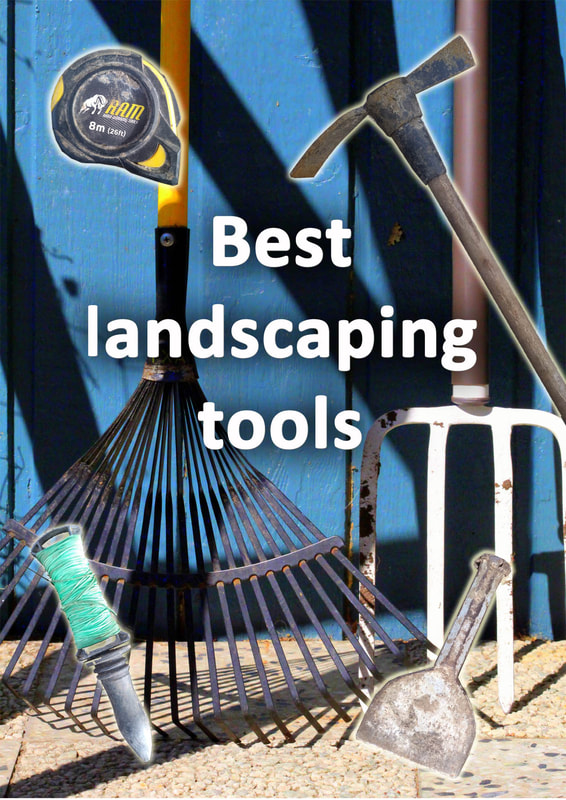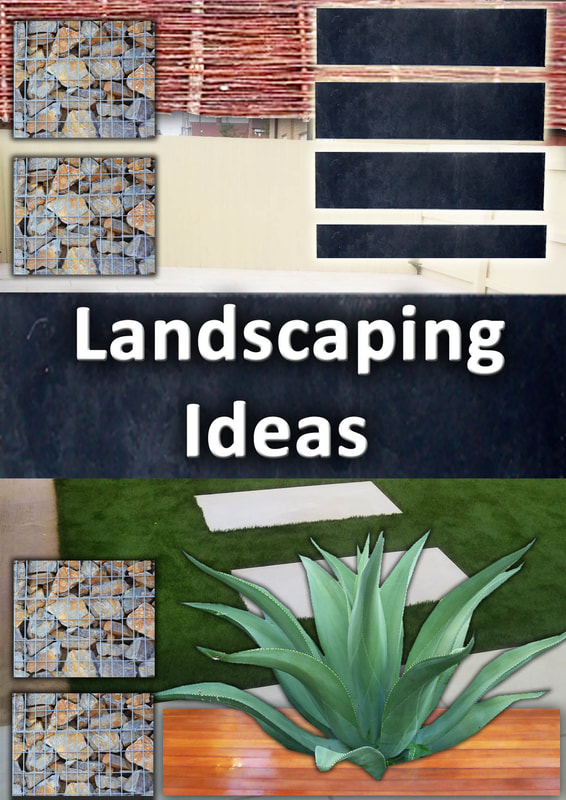|
This article contains affiliate links
There is probably no other soil type dreaded more when it comes to garden drainage than clay. Clay soil is made up of fine eroded rock particles that have built up in sedimentary deposits over millions of years.
These powder like particles are very fine and when wet form a sticky and dense putty. This makes clay soil extremely absorbent and difficult to break apart. Consequently clay is notoriously troublesome when attempting to work to a fine and crumbly texture. Clay soils are well known for being dry and cracked in summer and wet and compacted in summer. This can make clay extremely challenging in regard to a gardens drainage. In this article I will explain how to improve garden drainage on clay soils. Why does clay soil become waterlogged?Clay becomes waterlogged easily because its small particles absorb large quantities of water. This leads clay to expand in size and become densely compacted under pressure. Very wet clay can become compacted under its own weight creating an impervious layer. Years ago before plastic and rubber liners, clay was used to create water tight ponds. The clay soil was saturated with water and compacted using herds of cattle. Such action formed a thick and impervious layer that water could not pass through. this is why clay soil becomes so boggy and waterlogged in wet conditions. How to make clay soil drain betterEven though clay soil lends itself naturally to becoming waterlogged it can be conditioned for better drainage. There are a few different strategies to improve clay soils permeability, we have listed and described these below. Alleviate compactionOne of the first steps to improving drainage on clay soil is alleviating compaction. Once clay becomes too compact, the cycle of water logging and further compaction is inevitable. The first thing to do is digging over the top layer of the clay. This capped layer is typical of compacted clay ground and turning it over will help to break it up. The next step is to rotavate or till the soil with a rotavator. This will break up the clods and aerate soil particles. This is best done on a warm, dry, day during the spring time. The next step will be to mix in some additives to prevent clay particles from sticking back together. Soil additives to break up clayOrganic matter
Organic matter includes quite a spectrum of material which can help to break up clay. The most popular are peat, compost, bark chippings and leaf mould. Not only does organic matter prevent clay from sticking it provides food for soil organisms. This helps to boost soil ecology and further improve the quality and texture of topsoil. Coarse sand
Some of the best quality topsoil for growing plants is actually sandy, clay, loam. These soils are moisture and nutrient retentive while still being well drained. Therefore by mixing in plenty of coarse sand to clay soil you will improve its quality greatly. The sand will separate cloggy, clay, particles while improving its all round drainage. Gypsum
Gypsom is a natural occurring material also known as calcium sulphate. When mixed with clay it reacts with the soil particles helping to break them apart. This can be an effective way to open up clay soil to mix in more sand and organic matter. Double diggingDouble digging is a system of soil improvement which involves digging two spade depths deep. Excavated soil is heaped up in a line and manure or organic matter is laid at the base of the trench. Then a new trench is excavated into the previous trench covering the organic matter. The processes then repeated until a whole section of ground has been turned. Double digging helps to break up the soils hard pan, a compacted layer under the ground. When this layer is broken and mixed with organic matter it dramatically improves drainage. This is particularly the case with heavy clay soils. Implement a garden drainage strategy for clay
Clay soil like other garden soil types is always susceptible to water logging in times of heavy rain. Consequently it’s important to look past your soil type and foresee what other factors are contributing to poor drainage. This is vital if you are to implement an effective drainage strategy for your clay soil. The first thing you must do is identify low spots and gradient funnels. These are topographical features that influence the direction and velocity of surface run off. If you have countless bowls and divots within your landform these will encourage water collection. These will encourage excess ground saturation especially on clay soil. If there’s naturally occurring low contours to your garden this could be an effective route for a drainage channel. On clay soils it is good to seek natural low points and utilise these to create drainage features. These could be soakaways, swales or land drains. Where will the water go?It is always a good question to ask on any site; where does water naturally want to go? When you discover the answer the aim should be to transport the water there quickly. This will reduce ground saturation and help to drain the surrounding soil. Look for where gravity pulls water naturally, this will normally be at the low end of the site. This could be the perfect location for a soakaway. Then you must ensure that the gardens landform does not obstruct water flow or dam it in anyway. The best strategy to ensure this is the case is to create a level and even gradient. Garden drainage systems for clay soilThe best garden drainage systems for clay soils are those which provide adequate and free flowing discharge channels. A gardens gradient should be flush and consistent to maximise run off and reduce ground saturation. The best drainage system will implement drainage channels consisting of 100mm perforated pipes fed into a submerged drainage soakaway. Drainage channels and soakaways will be encased in non-calcareous, free draining gravel and capped with filtration fabric. Raise your gardens level
Changing the drainage qualities of waterlogged, clay, soil is possible but takes large quantities of material and effort. If your garden is particularly low lying there could be an opportunity to raise your gardens level. Even raising a gardens level by a couple of inches can dramatically improve drainage. It also provides the opportunity to import quantities of good quality, free draining, topsoil to site. Normally all that is required is the installation of retaining edging features to the perimeter of the garden. Incorporate raised beds
Raised beds are a great way to mitigate the effects of boggy, clay, soil. Not only do they provide well drained growing areas they can also help dry out underlying soil. In fact, having clay soil at the base of raised beds helps them to retain moisture during the summer months. Filling raised beds with free draining soil can be an effective growing solution for boggy clay soils. Mulching
Mulching clay soil can help to prevent moist ground from becoming capped and compacted. As clay soil is very difficult to keep weeded mulching can help prevent weeds from establishing. Keeping clay soils mulched overtime will help to improve the soils structure. As mulch breaks down it boosts soil ecosystems improving fertility and improving drainage. Garden drainage services & drainage contractors in Buckinghamshire
Buckinghamshire landscape gardeners are experts in garden drainage and provide a number of garden drainage solutions. Our garden drainage services include;
Our garden drainage services cover most of Buckinghamshire including:
Thank you for reading our article on how to improve drainage on clay soil. If you found it useful why not help us spread the message by sharing it via the icons below.
For further reading we have included some of our other relevant drainage articles below. Thank you!
'As an Amazon associate I earn from qualifying purchases'
3 Comments
Ron Johnson
5/19/2023 07:56:58 pm
I live in Washington state USA. This is from your article. It's
Reply
Leave a Reply. |
The Author
|
Landscaping services across Buckinghamshire, Amersham, Aylesbury & High Wycombe
Hyde Heath, Amersham, Buckinghamshire |
|
